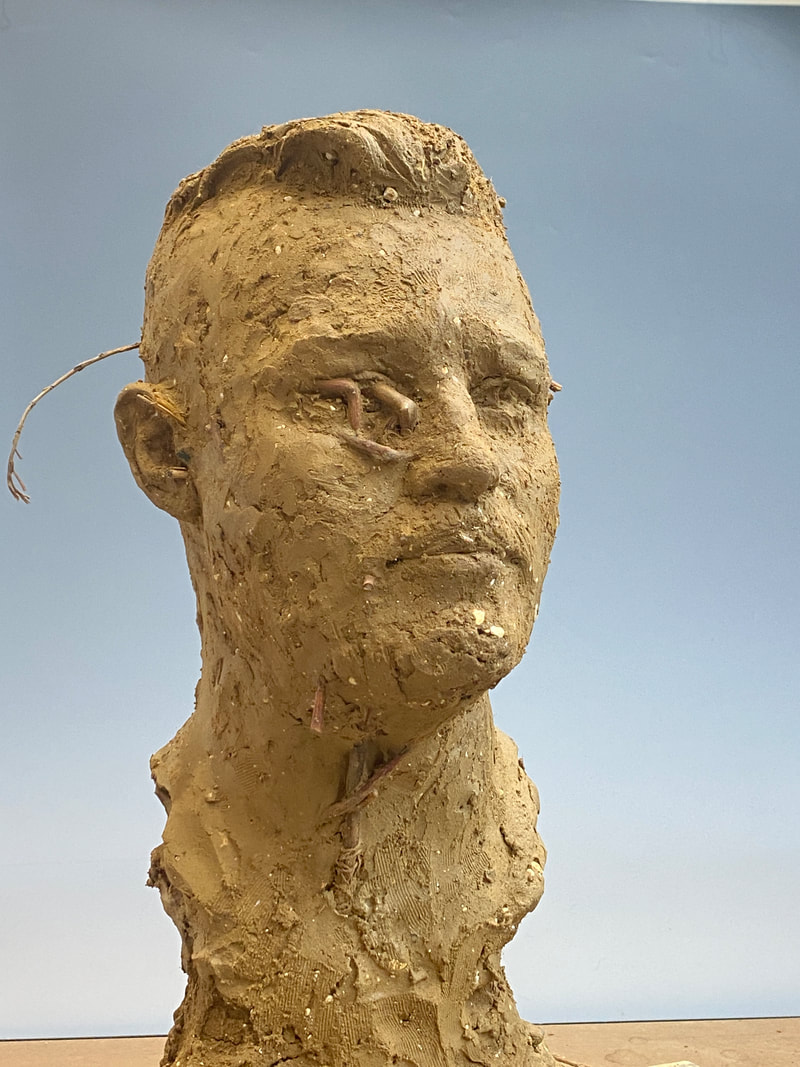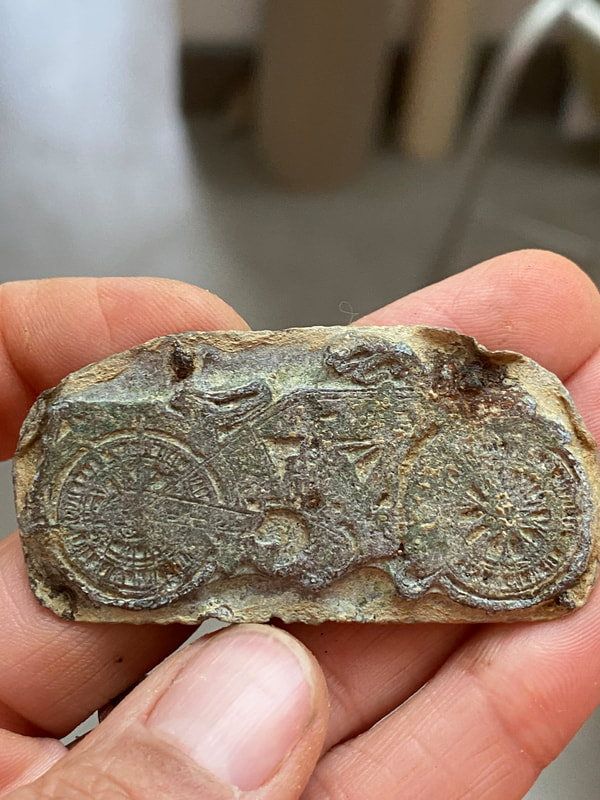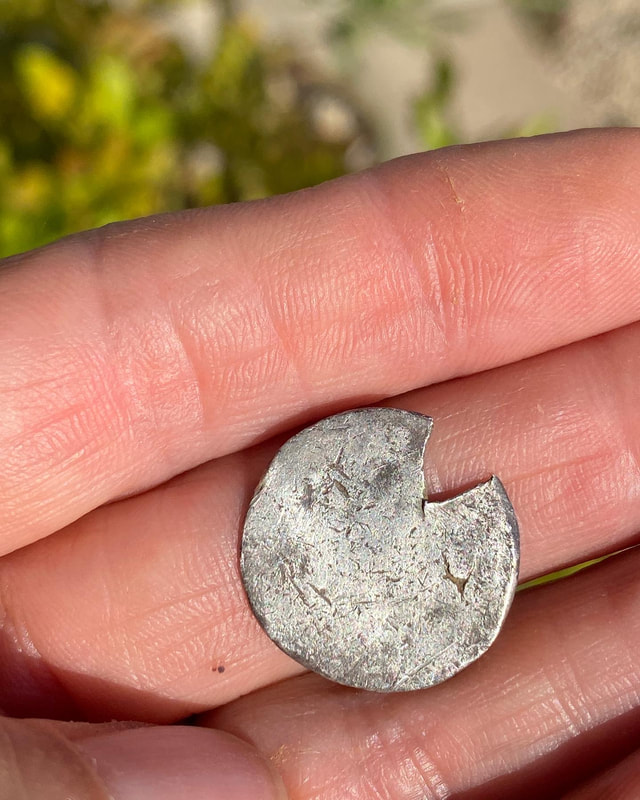|
The last few months have been very busy and rather exciting, exhilarating, intriguing and a little bit weird, so excuse the lapse in writing, however, for those who follow me on Instagram, you will be up to date with my quarry adventures. Exhibiting Portal – To a Land Before Prometheus at the National Maritime Museum in Greenwich as part of the Hands-on-History event with Thames Festival and the mudlarking community was a great success. To show my work, inspired by the contrast of the ancestral Thames deposits, here at the quarry, with the current London Thames deposits was a real eye opener for the visitors to see. Not only did the public learn about the existence of the ancestral Thames but also, they questioned the human impact on the current Thames foreshore, also noting our effect on the environment and impending climate changes. Thanks to Hanson for their continued support and to mudlarkers Marie Louise Plum and Jason Sandy for including me in the event. I have since given a talk to the Essex Rock and Mineral Society, how geology is informing my practice, and Ignite Chelmsford, on the subject of Art and the Environment alongside artist Daniel and Clara and EA Sustain founder Joanne Ooi, in connection with the recent successful exhibition of Gaia by Luke Jerram at Chelmsford Cathedral. With continued public engagement of this project, I am hoping to be more successful in applying for funding to continue this project to create and exhibit the resulting work in London, collaborating with the mudlarkers, and also, more importantly, to show this and future work in Essex. I have also continued my figurative sculpting investigations. This time, instead of live willow on the site, I have cut willow whips from the site and taken them back to my studio to experiment with. The leaves were removed from the dried stems before soaking in water to make them flexible. I could then bend them easily to help in the construction of an armature for a portrait bust. Rory, one of the quarry workers, kindly volunteered to be a model (the others will get their chance soon). Once the willow armature was ready I applied some scrim to hold it together, stuffed it with straw then applied a sandy mix of till or chalky boulder clay. A lovely sticky wet consistency that adhered well. This wet consistency shrank as it dried therefore creating lovely organic cracks but held together well enough for me to apply further layers of clay. I sculpted the portrait features using traditional measuring methods and site-sizing from images I had taken. I love how some of the willow pokes out from the surface keeping this very earthy and showing evidence of its construction. This will be developed further, challenging myself to create a full striding figure using this sustainable method of construction and the work can eventually erode back into the landscape it once came from. This work is the beginning of my investigations of paralleling the forces of geological rock migration with geographical human migration – connecting us to the landscape.
I have now moved my deep time geological investigations to the top layers of the cake. Using a metal detector, I have been searching the removed topsoil, the fields ready for topsoil removal and the areas where the topsoil has been removed. In one day, I found a WW1 motorbike print block, musket balls, WW2 bullets, buttons, shrapnel, neolithic flint tools and a WW2 Bomb! A span of 10,000 years of human occupation. The day ended with an exciting big bang as the bomb disposal team had to come and dispose of my discovery. I must just point out that this is a working quarry on private land and is not open to the public. Quarries are dangerous places, and this one is no exception. If you wish to visit the quarry the Essex Rock and Mineral Society do a field trip there once a year following strict health and safety guidelines. Clink on their link to find out more. I am gradually building up quite a collection of objects that record a history of human occupation of the site long after the Thames was redirected by the Anglian glacier nearly half a million years ago. The most exciting find is my first really old silver coin. We think an Edward 1 silver penny dating more that 700 years old. It has been registered with the Portable Antiquities Scheme and awaits verification. Finally, for today’s, blog the weird and a little macabre discovery deep in the wall of the excavated gravel and sands. A well, full of post war objects that have been disposed of, including medical objects, glass bottles, lots of shoes and a bright yellow teapot. After the war, the US airbase on the site closed and in the 1950’s Essex County Council used the Nissan huts to house the homeless while these families waited to be housed in new council houses. My guess is, the objects in the well are from when the last families left the site, disposing of old shoes no longer needed, and a medical room no longer required. The contents of this well offers a whole new art project on the social history of Chelmsford. The Yellow Teapot holds the stories of a time gone by and I am hoping to unravel the mystery of the shoes, their owners and their journey. I have begun by collecting, cleaning and photographing these objects and starting a feed on Chelmsford Remembered Facebook. Already there is a conversation of people who remember living or being born in the Nissan huts on the Boreham airfield. Some of their stories link up with the racing track on the old runway. Plenty for me to research and locals to engage with. Please contact me if you have any information that might lead to ownership of the shoes or the yellow tea pot. Now I must get on with sorting my studio and apply for grants so I can continue this project. Please do leave any comments below.
0 Comments
|
AuthorSculptor seeking answers from deep time Archives
August 2023
Categories |



































 RSS Feed
RSS Feed